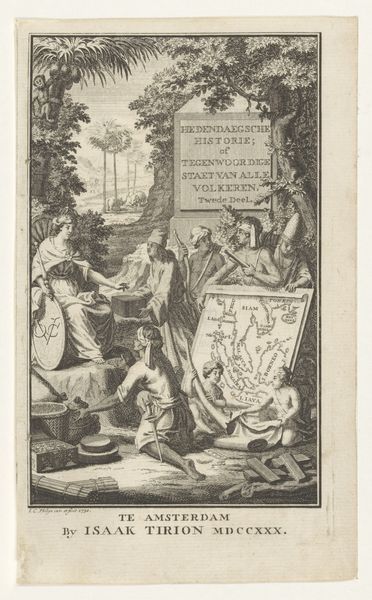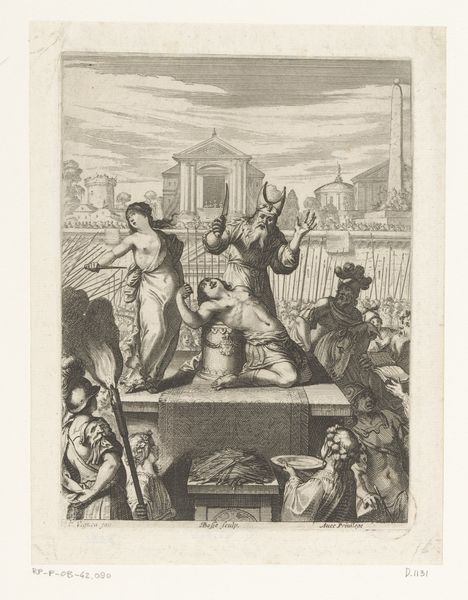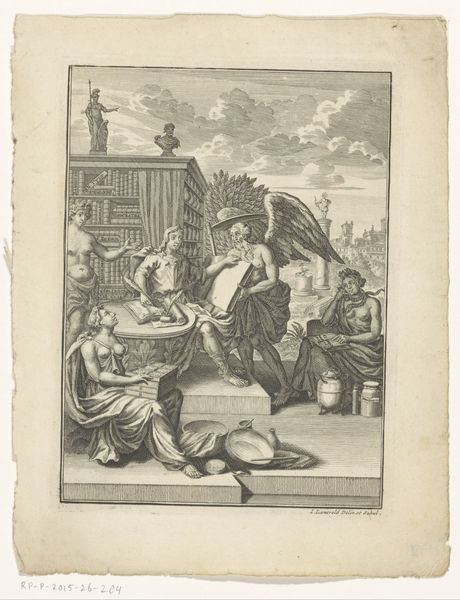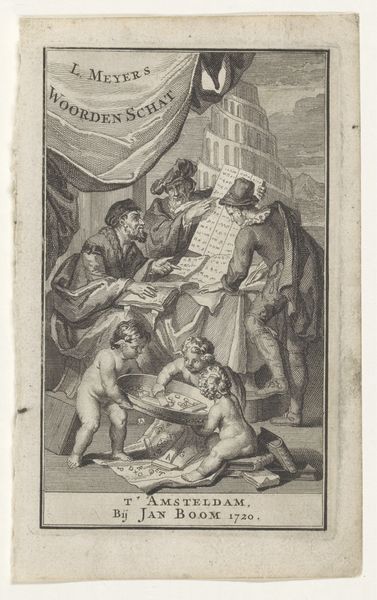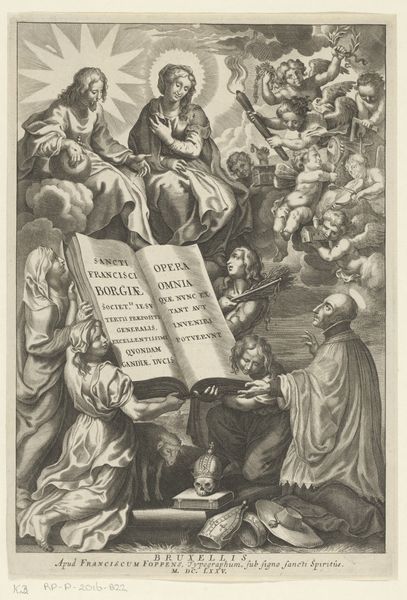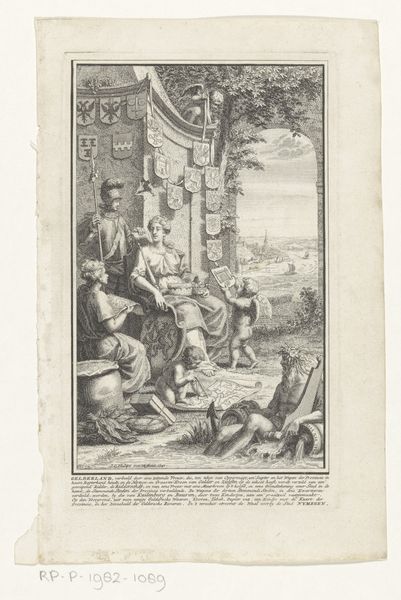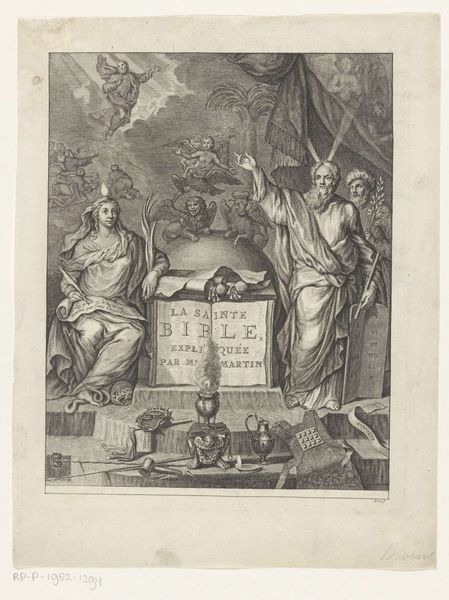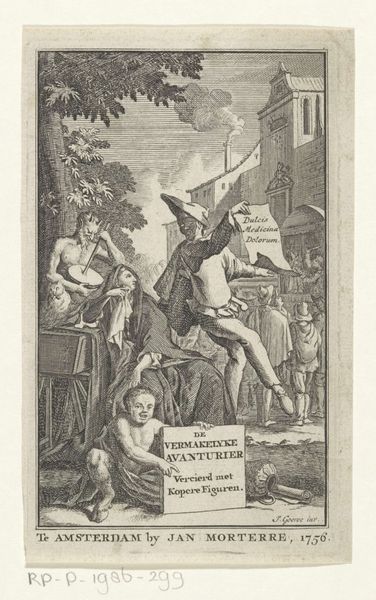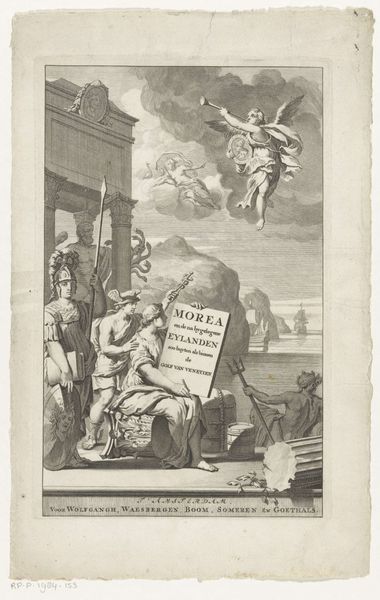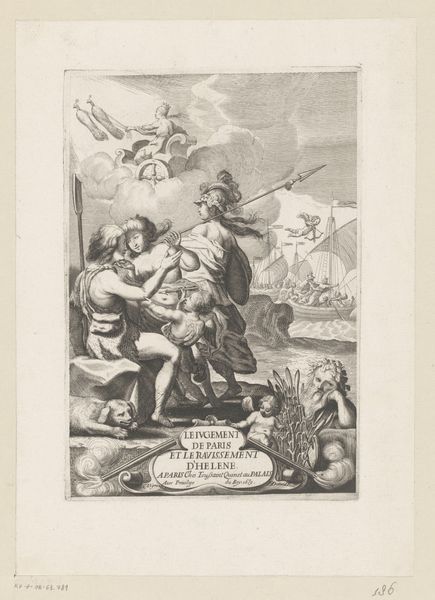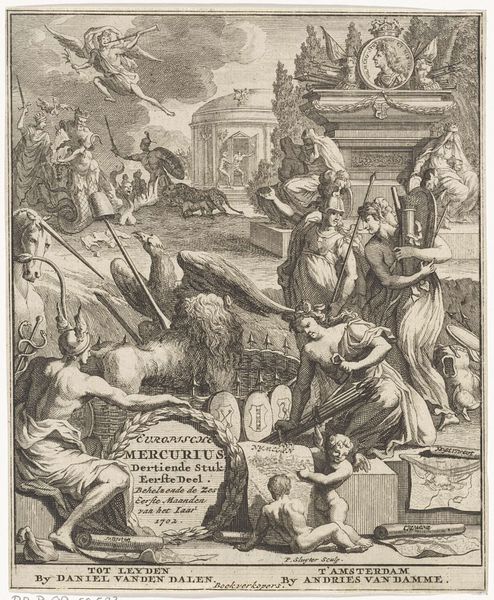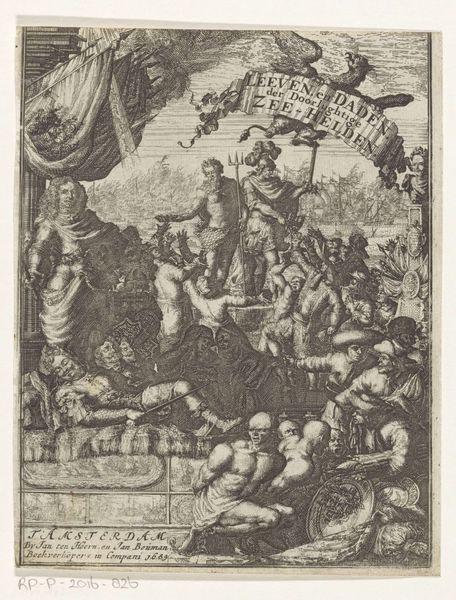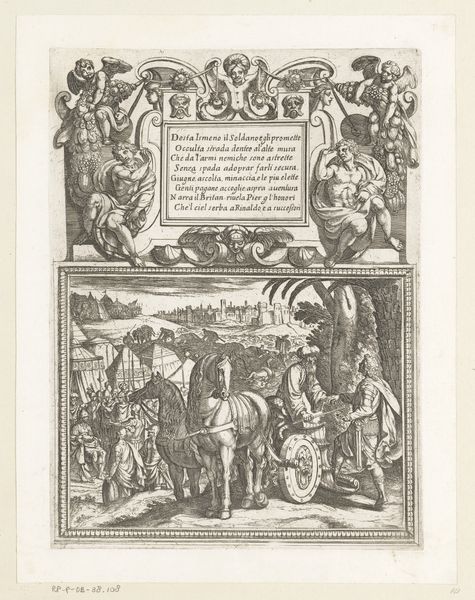
print, engraving
#
allegory
#
baroque
#
dutch-golden-age
# print
#
old engraving style
#
caricature
#
figuration
#
history-painting
#
engraving
Dimensions: height 305 mm, width 193 mm
Copyright: Rijks Museum: Open Domain
Editor: This engraving from after 1695, titled "Vrijgevigheid verstoot Gierigheid," by Gerrit de Broen, depicts an allegory. It looks like a clash between generosity and greed. I’m immediately struck by the composition; it's so clearly divided between light and dark. How do you interpret this work, seeing as it deals with charity? Curator: This print speaks volumes about the socio-political landscape of the Dutch Golden Age, where prosperity thrived alongside visible poverty. This image underscores the public role of art during this era; it visualizes moral concepts that were hotly debated in the public sphere, doesn’t it? Editor: Definitely. There's the figure representing Generosity giving freely from an overflowing jug, while on the other side, we see Avarice clinging tightly to her possessions. The winged cherubs overhead contrast with the approaching storm behind Avarice. It seems intended to be very clear! Curator: Precisely. The inscription in Dutch highlights the period's emphasis on virtuous living and the condemnation of greed. But, consider the market for such prints. How do you think these images influenced public discourse and potentially charitable giving among the wealthy merchant class? Did this change society? Editor: I guess that displaying the virtues of charity through widely distributed prints could definitely help to shape social values. Making it public would encourage more private benevolence from fear of a bad public image. Curator: That's an insightful point. Visual propaganda was, and is, quite effective. Looking closer, this print doesn’t only represent values, it is also very consciously trying to *construct* value – of giving, of community. The way art like this circulated shaped how people perceived wealth, poverty, and their own responsibilities within that social fabric. Editor: So it's not just about morals, but about power dynamics? It's fascinating how a seemingly straightforward image reveals a more complex interplay between art, social expectations, and the reinforcement of certain societal structures. Thank you! Curator: Absolutely. Seeing art in the context of social history always gives us more nuanced appreciation, I think.
Comments
No comments
Be the first to comment and join the conversation on the ultimate creative platform.
